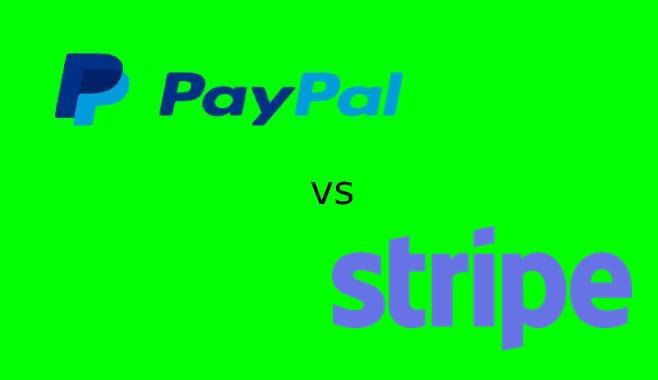PayPal vs Stripe Comparison

PayPal vs Stripe is one of the most discussed comparisons across the world when it comes to deciding on which payment processor is a better option to use for making payments online. How would you decide on which one to use? The only way to figure that out is to analyze and understand what the features of PayPal and Stripe respectively are, and come to a conclusion by looking at the advantages and disadvantages of the two.
It is also important for you to understand what your requirements are before you choose a payment processor. In this article, we will help you out by discussing some of the most important factors upon which your decision relies. So before we begin drawing a comparison between Paypal vs Stripe, let us go through a short detailed primer on what the two companies are like.
PAYPAL
PayPal as an online payment company is most suited for online business owners, customers of various kinds of businesses, people with start-ups or bloggers who have just started out. The service especially comes in handy for freelancers. PayPal offers flexible payment options and it has multilingual features which makes it a market leader when it comes to online transactions in different parts across the world.
STRIPE
Stripe is undoubtedly the greatest competition for PayPal. They are just as suited to various enterprises, ecommerce businesses and freelancers. Stripe also enables users to manage their invoices and subscription logic. In certain cases, the San Francisco based online payment company also allows users to have international payment methods without setting up a bank account or a Stripe account.
Transaction Fees
It is very important to take a look at the transaction fees of both the companies because it is the most important aspect of a payment processor. While both companies have the same base rate of 2.9% + 30 cents for each transaction, there are certain details that must be noted.
Stripe offers a better rate in case you do 1 million dollars in a year. However, you need to get in touch with them via email or customer care helpdesk numbers in order to negotiate suitable deals. Stripe charges only $15 for the chargebacks; it has a 2% charge for conversion currency. There are no monthly fees or refund costs, neither are there hidden fees for card storage or setup on Stripe.
PayPal has a transaction price range that starts at 2.5% + 30 cents, which later becomes 2.2% + 30 cents, and finally to a total of $100,000 monthly.PayPal, on the other hand, charges $10 per month for cards, 3.5% for American Express Credit Card, a refund fee, and 1% (and above) for international cards.
While processing a transaction that is less than $10, Stripe charges 5% plus .05¢, and a .05¢ RADAR. On the other hand, PayPal charges 5% plus .05¢ for each transaction.
Data Portability
Stripe helps you out and moves your credit card data taking care of the PCI compliant way because it values data portability. PayPal, however, does not give you this data in case you try to switch processors, which then becomes a headache.
Access to Funds
With Stripe, the time it takes for funds to be deposited into your bank account is 2 days tops, on an average. On the other hand, PayPal requires an average of two to four days when you are moving your funds to your bank account. Moreover, PayPal offers the options for making faster transactions, but that comes at an additional cost.
Setup
When it comes to setting up Stripe, a little backend and technical knowledge can come in handy. There are multiple options to customize, including the one that involves adding a button to enable the Pay with Card option. It is easier and more customizable over PayPal when it comes to ease of setup. However, Stripes requires more development knowledge and might be tricky for users who are not very efficient with tech.
Customer Support
There are several ways to get in touch with Stripe - through help center, social media, email support, as well as chat support channels. PayPal has its own community forum that functions as a customer support team, as well as help center, social media, email and live chat support. The recent addition of the 24x7 customer care support system of Stripe makes it friendlier for the users, as compared to PayPal where the customer care services go dark during certain hours of the day.
How Are the Payments Handled?
While PayPal requires users to exit your website in order to sign into a PayPal account before it redirects you back to the site, Stripe allows its users to make payments without leaving the website. Thus, Stripe is perhaps more desirable if you wish to keep your branding consistent during your customer’s payment procedure.
Security
Stripe and PayPal both offer services that are PCI Compliant, which means there are strict standards when it comes to the Payment Card Industry. Therefore, both the companies ensure that your cardholder data remains secure. In addition, Stripe uses RADAR, which is a machine that protects customers from frauds. It helps to keep track of data all around the world in order to be able to differentiate between what is fraudulent and what is legitimate.
Conclusion
While both the online payments services have their pros and cons, Stripe slightly edges over PayPal. Especially due to the former’s relatively simpler fee structure and a more prompt and reliable customer support.
See also: PayPal vs Payoneer